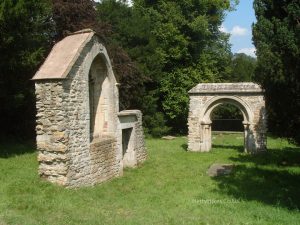
Other pages on our website:
- Woodchester
- Woodchester Mansion and Park
- Woodchester Companies
- Woodchester Piano Works
- Woodchester Saw Mills
The Roman pavement was known about in 1693. One hundred years later Samuel Lysons excavated the whole villa and published a book about it. The villa was one of the largest found in Northern Europe with 64 rooms and 13 mosaics – the Orpheus pavement is the largest and was uncovered in 1814, 1822, 1834, 1842, 1846, 1852, 1880, 1890 , 1926, 1935 (visited by 30,000 people), 1951 (seen by 42,000).
In 1954 four other mosaics were uncoverd for two weeks.
In 1963 the Orpheus mosaic was open for a month and nearly 50,000 visitors saw it.
In 1973 it was open for seven weeks and 140,000 visitors caused such traffic congection that the villagers decided it should not be shown again.
Link to an article in Autocar about the Roman Pavement displayed in 1951 www.mg-cars.org.uk/imgytr/pdf/autocar200451.pdf
Found during 2014 search of Citizen archive.
1951_07_10 Author unknown
1987
Link to Woodchester Mosaic replica
It took Bob and John Woodward 10 years to make the replica from 1.6 million tiny tesserae tiles.
In 2010 it was put on display at Prinknash Abbey, but still without a permanent home.
A Woodchester consortium failed to get the mosaic, and it was sold to an anonymous buyer for £75,000.


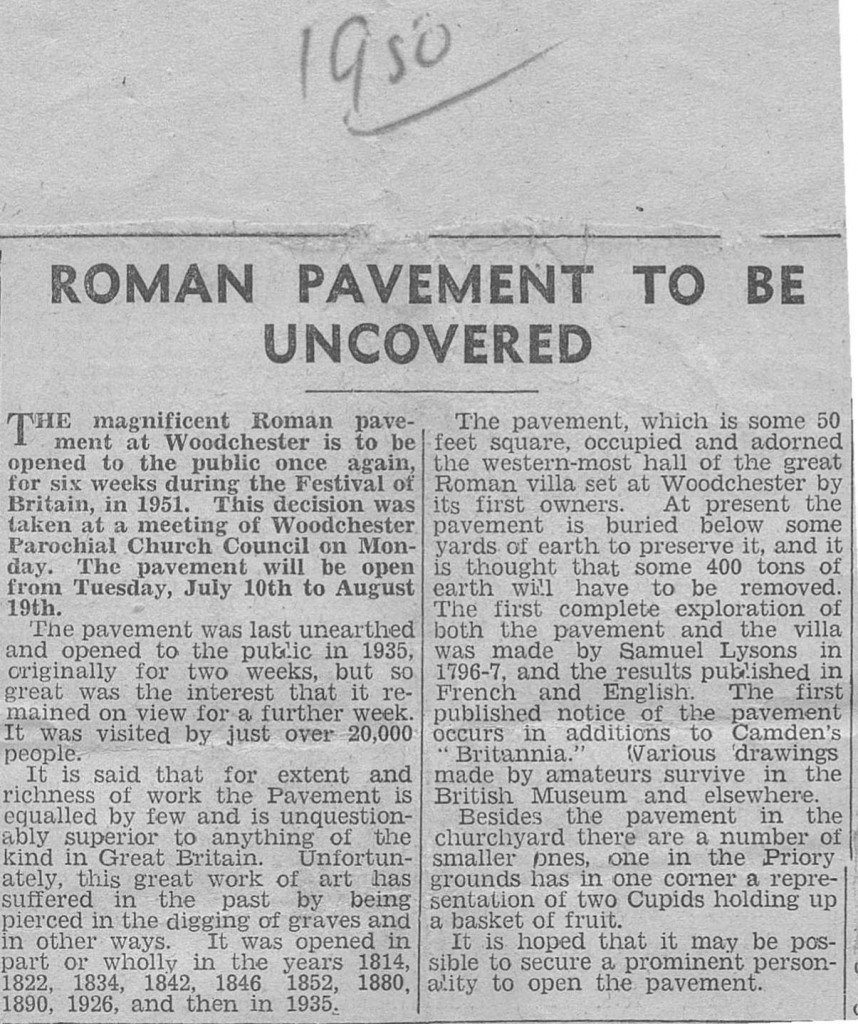
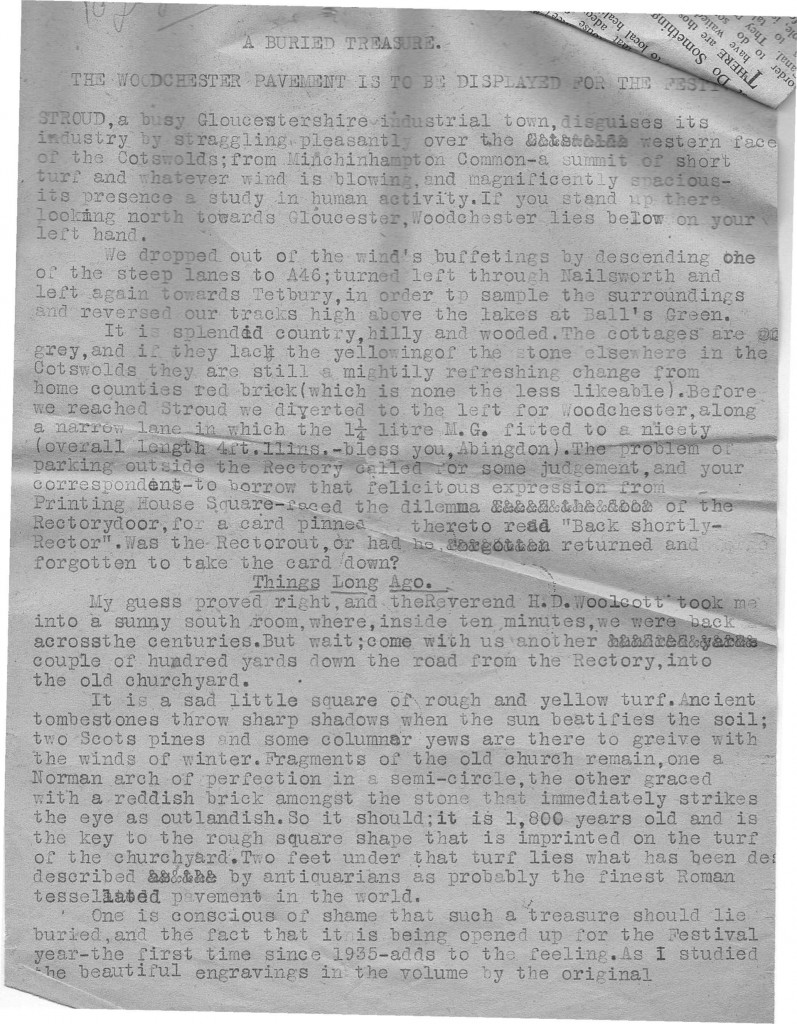
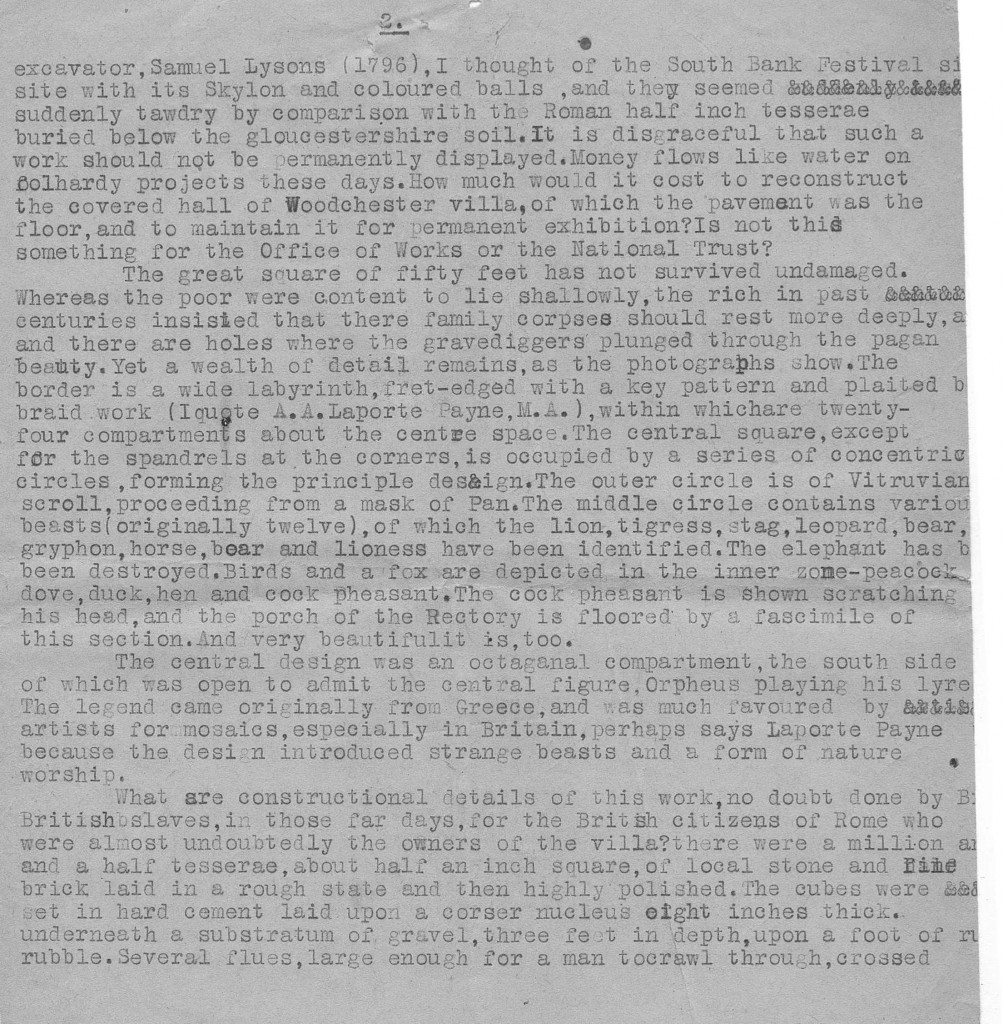
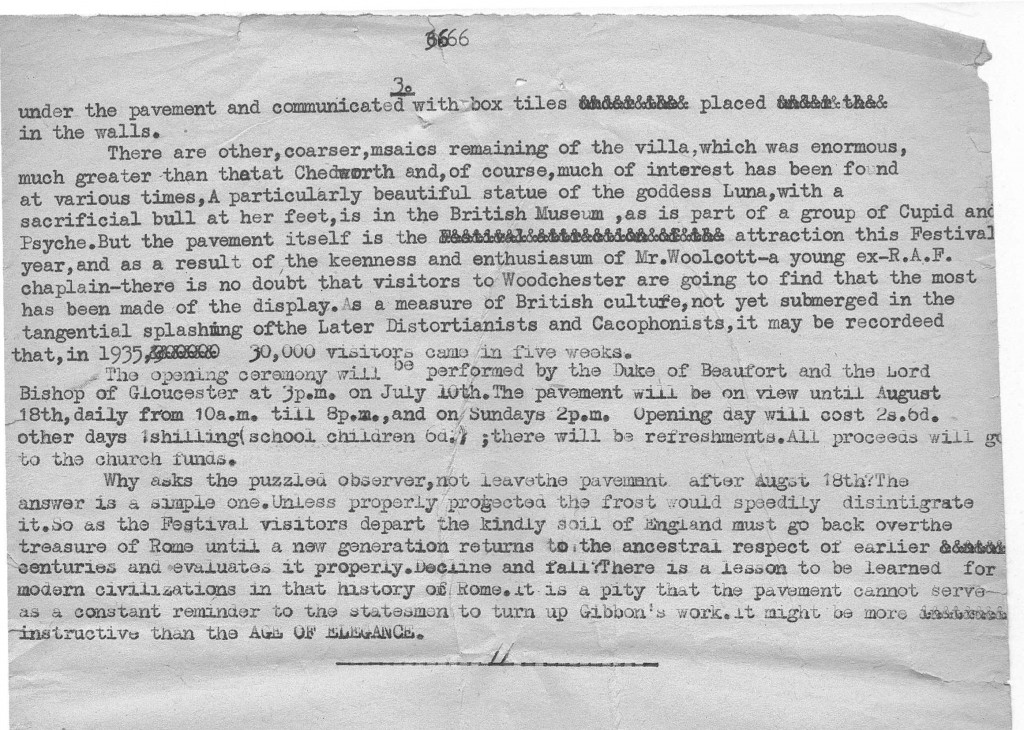
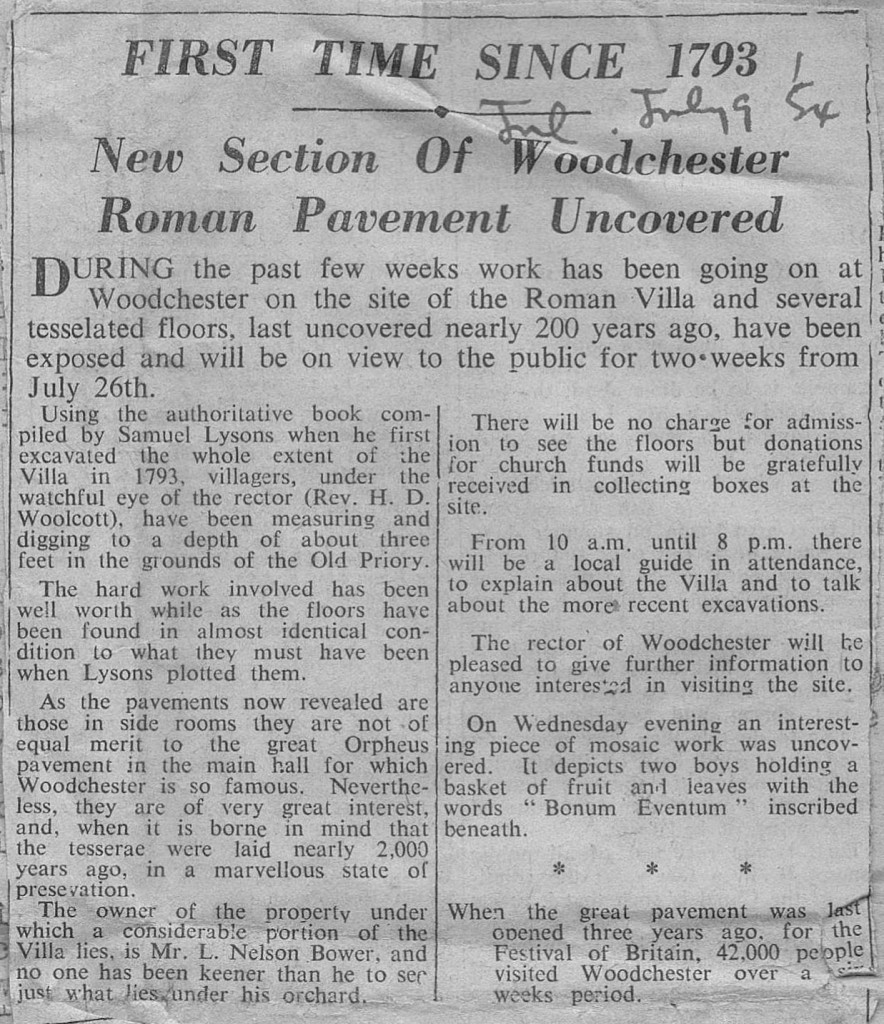

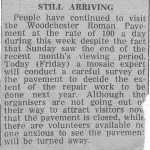
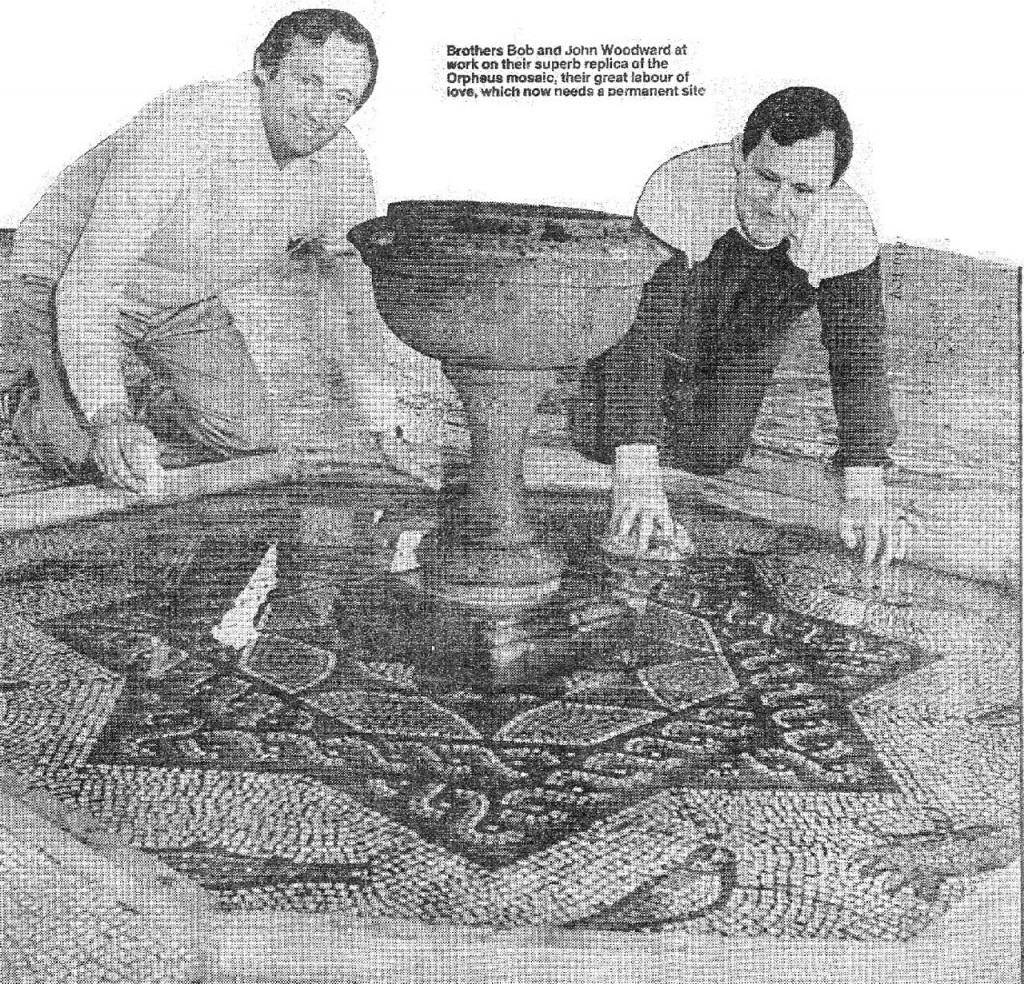
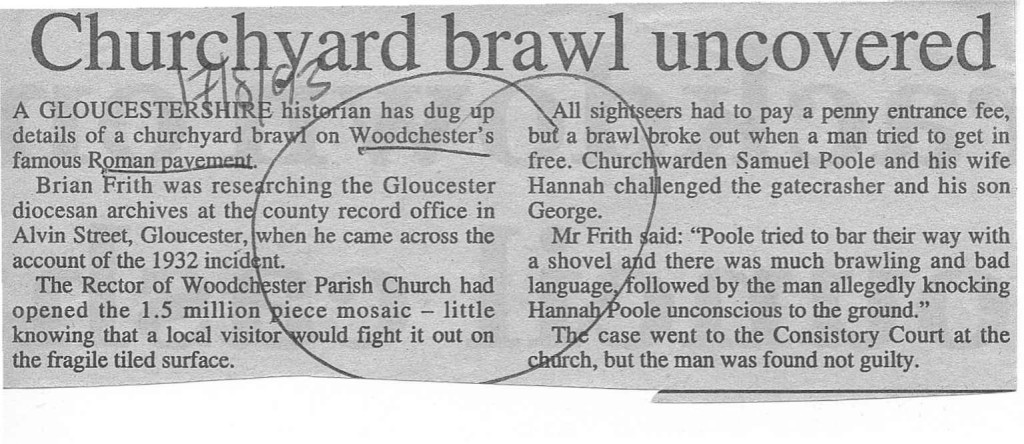
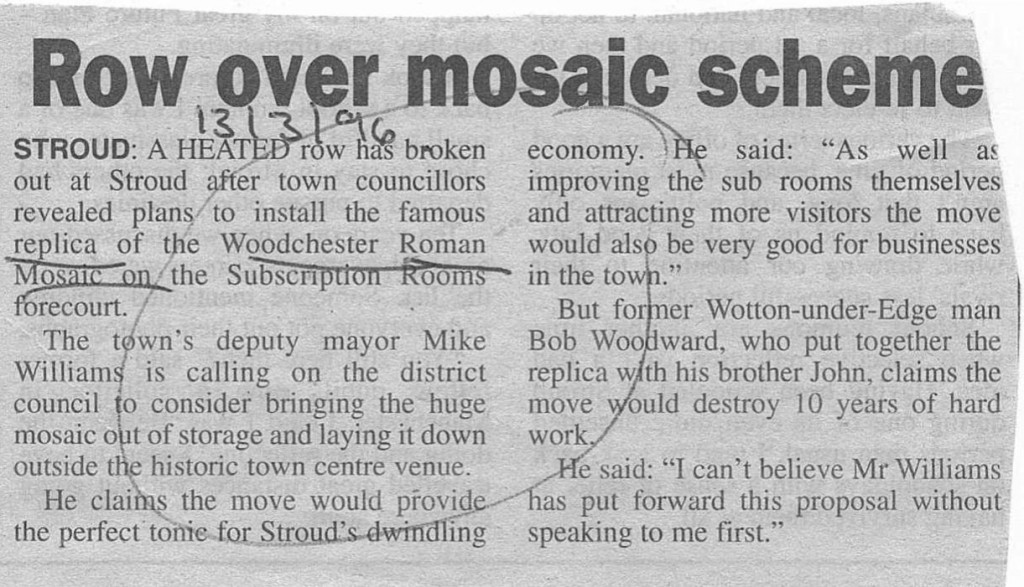
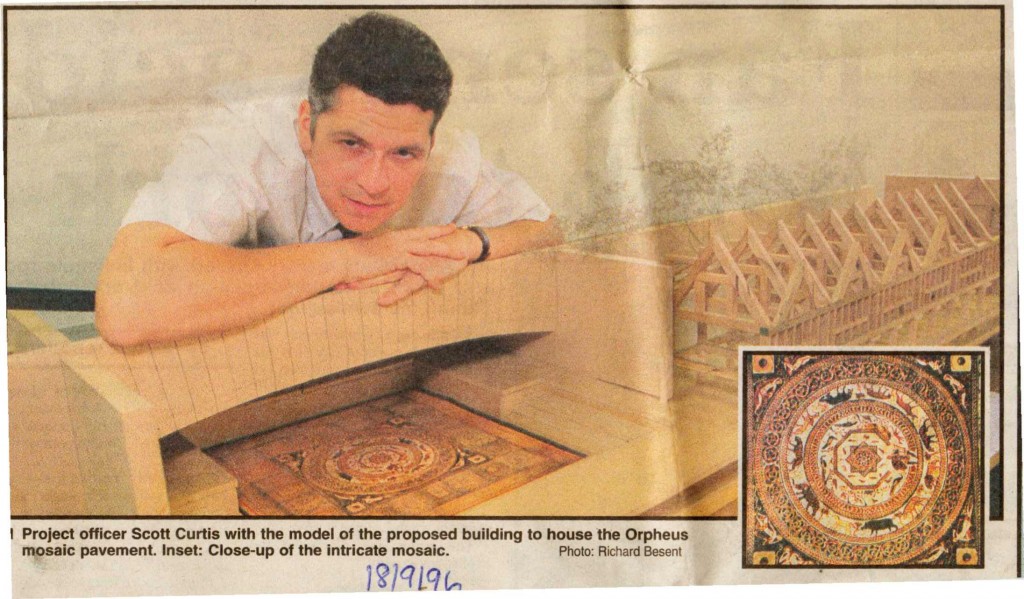
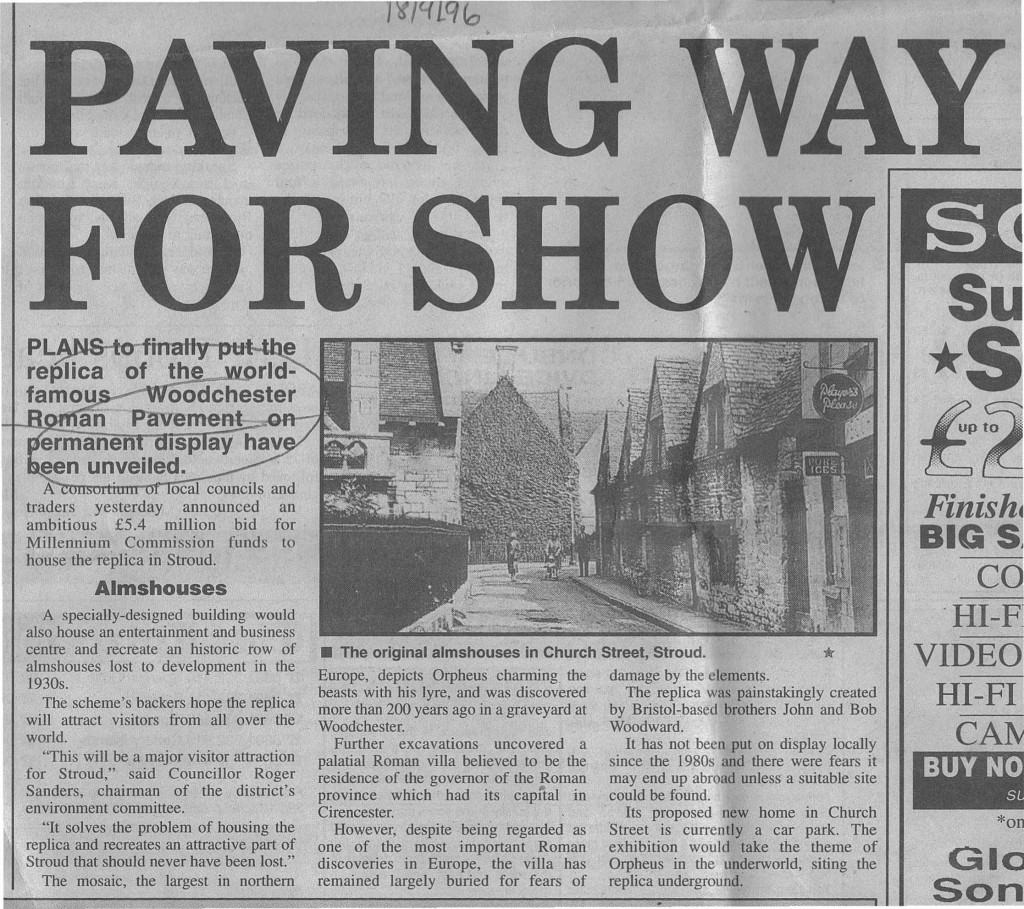
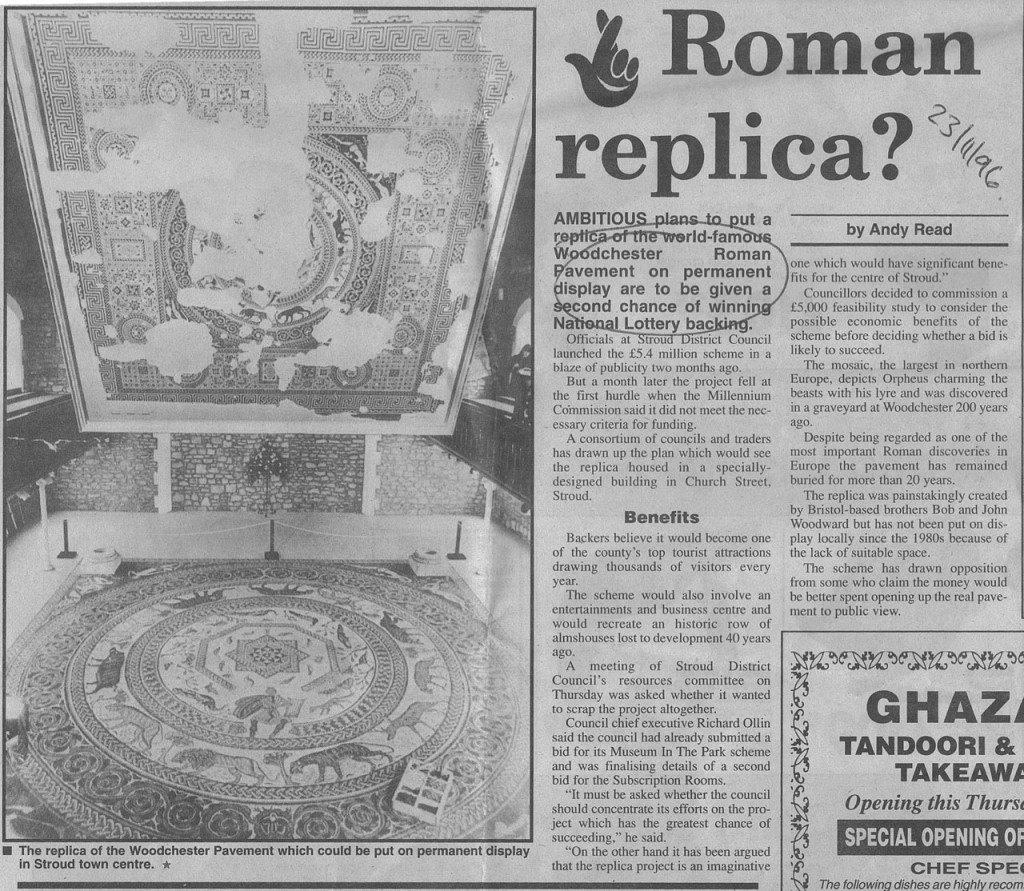
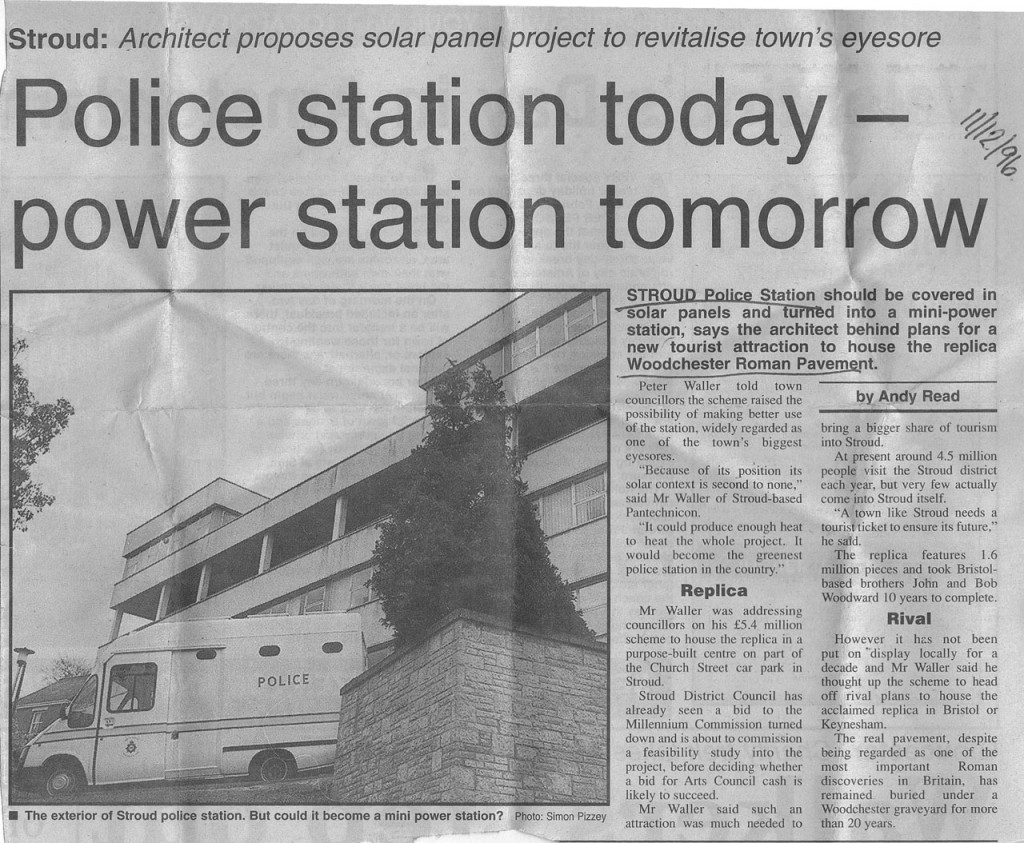
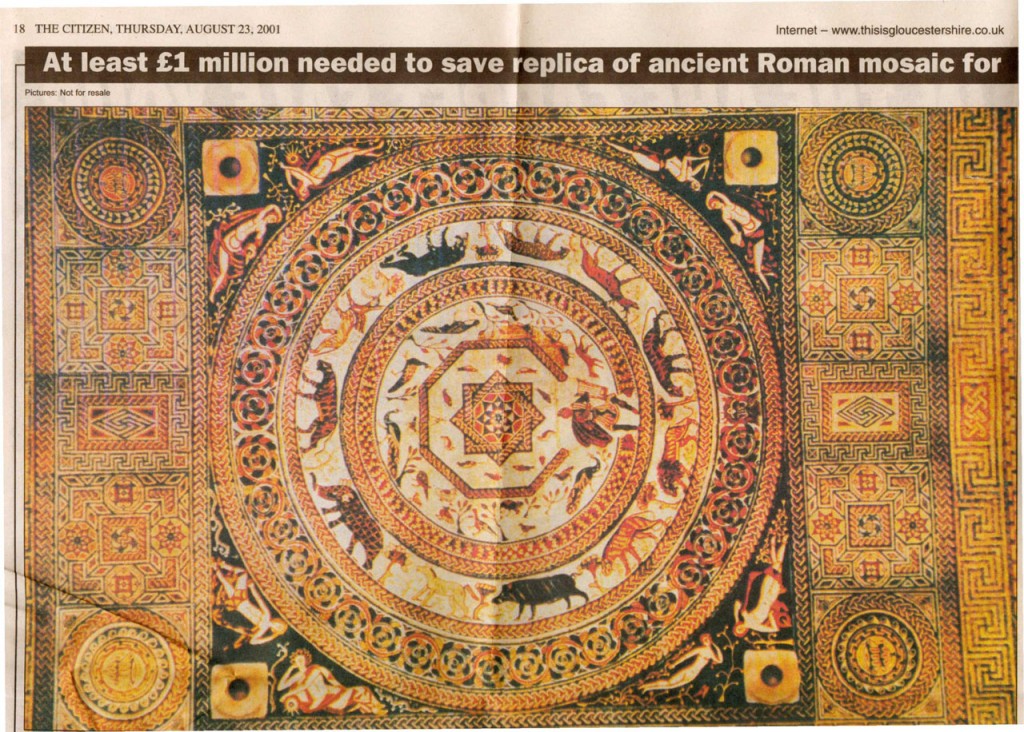
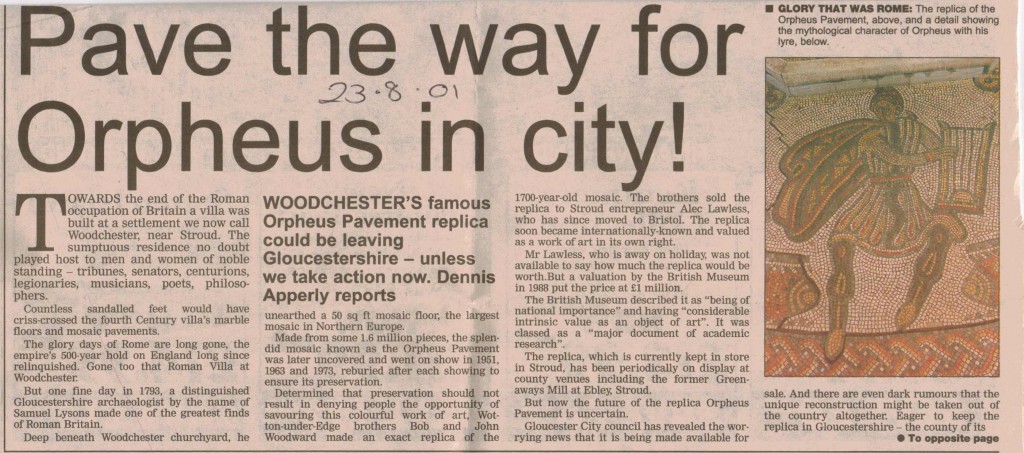
[…] The Orpheus Pavement – which depicts Orpheus, legendary Greek musician, poet and prophet, charming birds and animals with the sounds of his harp – is one of the finest and largest mosaics in Europe, so it is particularly tragic that it remains out of public view. Sadly (speaking as an archaeology graduate) this can be the way with mosaics, which are very costly to preserve and display, and keeping them in situ does sometimes end up being the safest and best place for them, once they have been thoroughly recorded through excavation. You can see contemporary articles about the various uncoverings of the mosaic since the 1950s in this great photo archive put together by Stroud Local History Society here. […]